- About us»
- Net income calculator»
- Population aging»
-
- Least developed regions»
-
- Average wage
- Material need benefits
- Meal allowance
- Counties of Slovakia
- Inflation
- Living and Subsistence Minimum
- Unemployment of Czechia and Slovakia
- NACE Classification
-
- Life expectancy
- Gender differences
- Youth unemployment and NEET
- Minimum wage in EU
- Unemployment rates of different age groups
- Share of salaries on GDP
- Employment rate
- NEET
- Long term unemployment
- Unemployment rate
- Percentage of employees ususally working at nights
-
- Bratislava and surroundings
- Kopanice
- Danube river
- lower Vah river
- middle Vár river
- upper Nitra river
- lower Nitra river
- Mining cities
- Kysuce a Orava
- upper Vah river - Liptov
- Spiš cities
- upper Hron river
- Juhoslovenská kotlina
- Košice fold and Torysa river
- upper Zemplín
- lower Zemplín
- EU regions
- NUTS3 regions of Slovakia
- LAU1 dataset
-
- Projects and activities
- Inclusive growth»
- Good work
- Project SKRS
- Social system – reality and vision
- Library
-
- Education of unemployed
- Young unemployed not taking part in education
- Proposal to change the system of education funding
- News»
- Contact
Hungary – HU
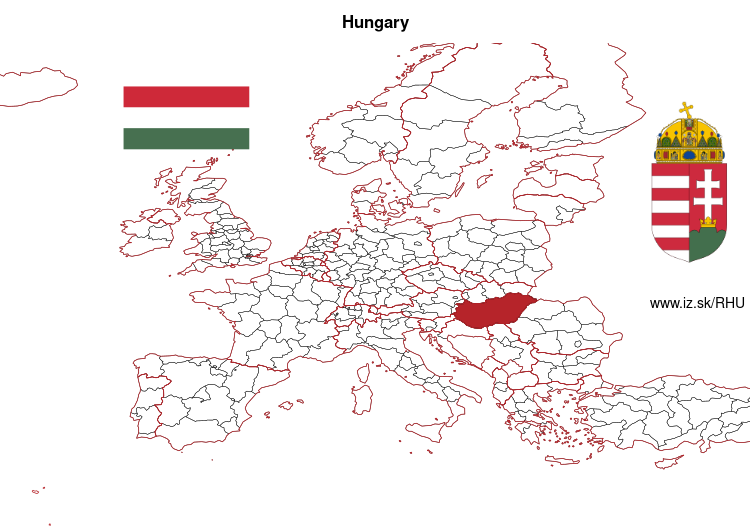
More on wikipedia wikidata Q28 on OpenStreetMap Hungary slovensky: HU
Subregions: Central Hungary, Transdanubia, Great Plain and North
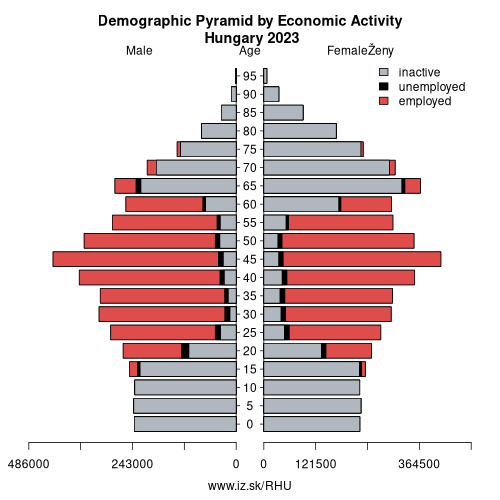
Unemployment
| Indicator | Period | Value |
|---|---|---|
| Unemployment | ||
| unemployment rate | 2024 | 4.5 |
| youth unemployment rate | 2025q3 | 14.8 |
| unemployment rate of low educated people | 2025q3 | 12.4 |
| Long term unemployment | ||
| long term unemployment | 2025q3 | 1.3 |
| share of long term unemployed | 2025q3 | 27.7 |
| Unemployment according to labour offices | ||
| number of registered unemployed | November 2025 | 220 688 |
| number of unemployed women | November 2025 | 115 130 |
| number of vacancies | November 2025 | 129 486 |
Comparison of unemployment according to ILO methodology and registered unemployment yields some differences.
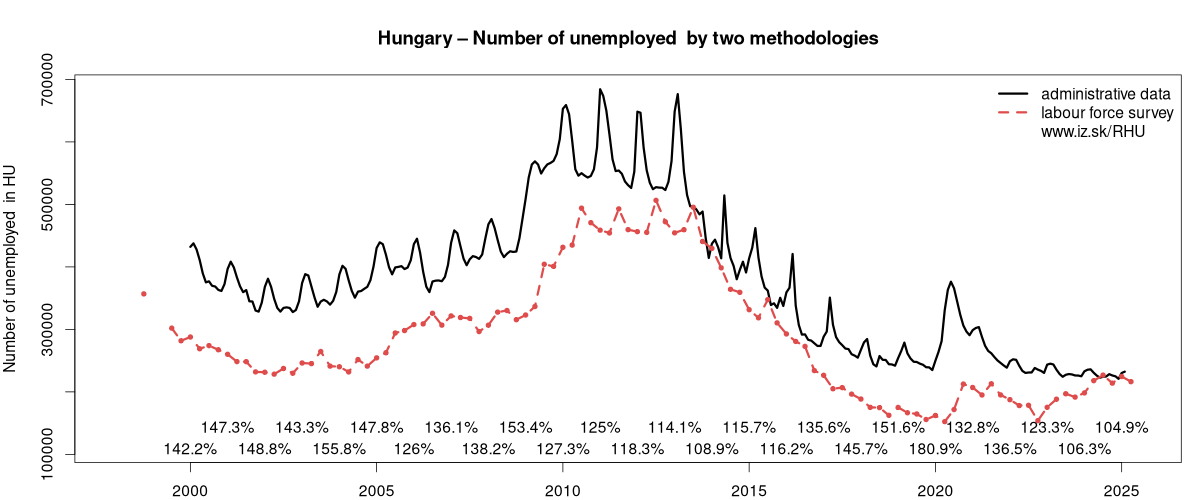
Data on unemployment in counties of Hungary are available at Local Administrative Units data of Visegrad countries.
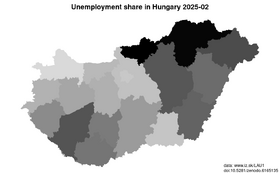
Composition of population according to age group, education and economic activity, Hungary
| Age group | Low education | Middle education | High education |
|---|---|---|---|
| Y20-29 | P: 150.9 E: 82.9; U: 17.8; I: 50.2 | P: 703.2 E: 447.7; U: 28.5; I: 227.0 | P: 190.9 E: 162.1; U: 5.8; I: 23.0 |
| Y30-39 | P: 142.5 E: 90.1; U: 15.1; I: 37.3 | P: 648.0 E: 577.0; U: 21.8; I: 49.2 | P: 429.6 E: 406.5; U: 7.0; I: 16.1 |
| Y40-49 | P: 175.9 E: 124.6; U: 15.2; I: 36.1 | P: 846.7 E: 766.7; U: 23.8; I: 56.2 | P: 512.3 E: 489.7; U: 5.4; I: 17.2 |
| Y50-59 | P: 171.2 E: 108.0; U: 9.9; I: 53.3 | P: 806.9 E: 699.7; U: 20.7; I: 86.5 | P: 317.8 E: 297.8; U: 4.1; I: 15.9 |
| Y60-69 | P: 199.0 E: 34.5; U: 3.3; I: 161.2 | P: 712.4 E: 229.9; U: 8.2; I: 474.3 | P: 261.2 E: 119.6; U: 1.9; I: 139.7 |
Note: in thousands in 2023, according to labour force sample survey. P – total population, E – employed, U – unemployed, I – number of economically inactive
Demographics
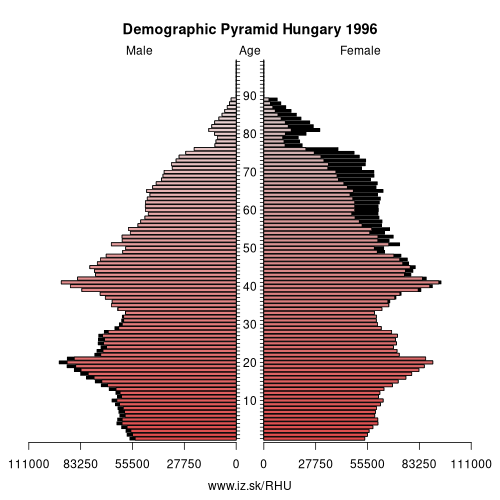
| Indicator | Period | Value |
|---|---|---|
| Demographics | ||
| number of inhabitants | 2024 | 9 584 627 |
| population density | 2023 | 105.1 |
| old-age dependency ratio | 2024 | 31.9 |
| Population ageing | ||
| unemployment rate – over 55 years | 2025q3 | 3.2 |
| aggregate replacement ratio | 2024 | 0.5 |
| aggregate replacement ratio – females | 2024 | 0.53 |
| life expectancy of a 50 year old | 2023 | 28.5 |
| healty life expectancy at 50 years | 2023 | 17.1 |
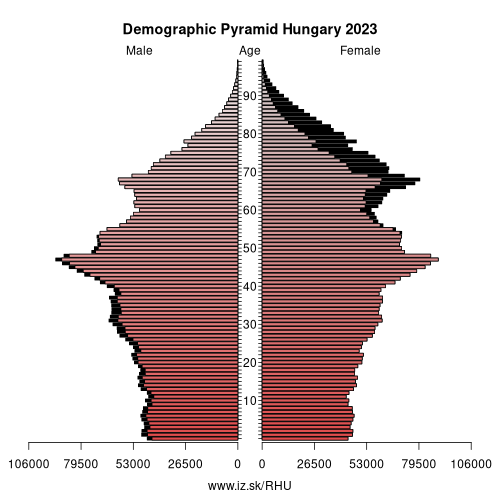
Employment by sectors, Hungary
| NACE r2 | % | NACE r2 | % | ||
|---|---|---|---|---|---|
| A | 200 | 4% | B-E | 1063 | 23% |
| F | 389 | 8% | G-I | 1039 | 22% |
| J | 179.6 | 4% | K | 112.5 | 2% |
| L | 35.1 | 1% | M_N | 399.6 | 8% |
| O-Q | 1085.4 | 23% | R-U | 211.4 | 4% |
| TOTAL | 4714.6 | 100% |
Data for the period year 2024. Source of the data is Eurostat, table [lfst_r_lfe2en2].
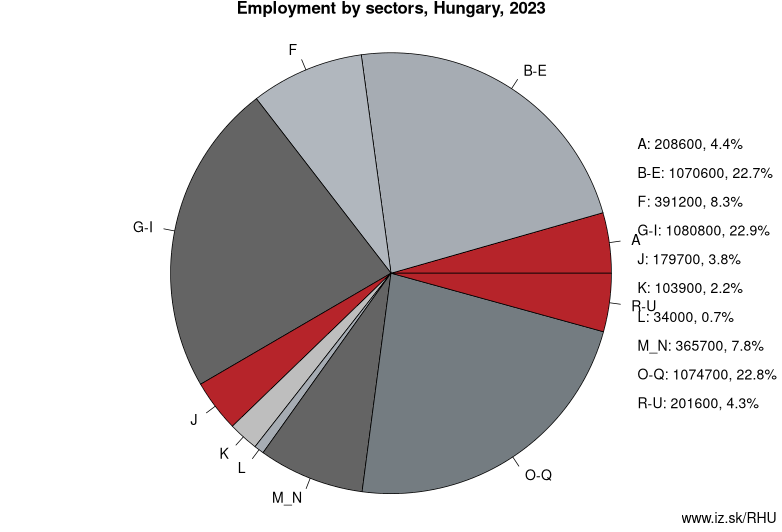
Hungary (Hungarian: Magyarország [ˈmɒɟɒrorsaːɡ] (listen)) is a country in Central Europe. Spanning 93,030 square kilometres (35,920 sq mi) in the Carpathian Basin, it borders Slovakia to the north, Ukraine to the northeast, Austria to the northwest, Romania to the east, Serbia to the south, Croatia to the southwest, and Slovenia to the west. With about 10 million inhabitants, Hungary is a medium-sized member state of the European Union. The official language is Hungarian, which is the most widely spoken Uralic language in the world, and among the few non-Indo-European languages to be widely spoken in Europe. Hungary's capital and largest city is Budapest; other major urban areas include Debrecen, Szeged, Miskolc, Pécs and Győr.
The territory of modern Hungary was for centuries inhabited by a succession of peoples, including Celts, Romans, Germanic tribes, Huns, West Slavs and the Avars. The foundations of the Hungarian state were established in the late ninth century CE by the Hungarian grand prince Árpád following the conquest of the Carpathian Basin. His great-grandson Stephen I ascended the throne in 1000, converting his realm to a Christian kingdom. By the 12th century, Hungary became a regional power, reaching its cultural and political height in the 15th century. Following the Battle of Mohács in 1526, Hungary was partially occupied by the Ottoman Empire (1541–1699).
Neighbours: Slovenia, Serbia, Romania, Croatia, Slovakia, Austria
Subregions: Central Hungary, Transdanubia, Great Plain and North
Suggested citation: Michal Páleník: Europe and its regions in numbers - Hungary – HU, IZ Bratislava, retrieved from: https://www.iz.sk/PHU, ISBN: 978-80-970204-9-1, DOI:10.5281/zenodo.10200164
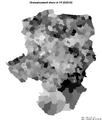
Local Administrative Units data of Visegrad countries
Statistical data on LAU1 regions of Slovakia, Czechia, Poland, Hungary. This LAU1 panel data dataset on 556 regions contains data on population, age structure of inhabitants, on number and structure of unemployed and is regularly updated.. . .
Similar articles
Regions of the European Union, Regions of the Slovak Republic, Changes in the LAU1 dataset, Vacancies, Unemployment structure in the Visegrad region, Local Administrative Units data of Visegrad countries, Labour market indicators of slovak regions., Counties of Slovakia, Unemployment of Czechia and Slovakia

 Share
Share Facebook
Facebook Twitter
Twitter News
News